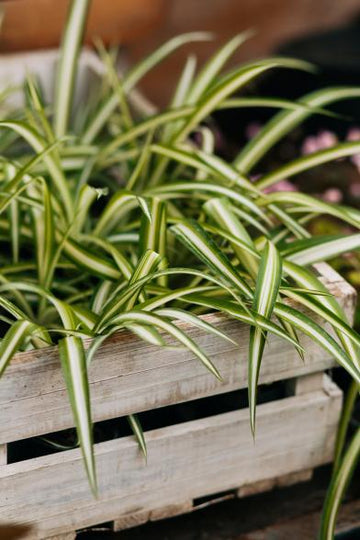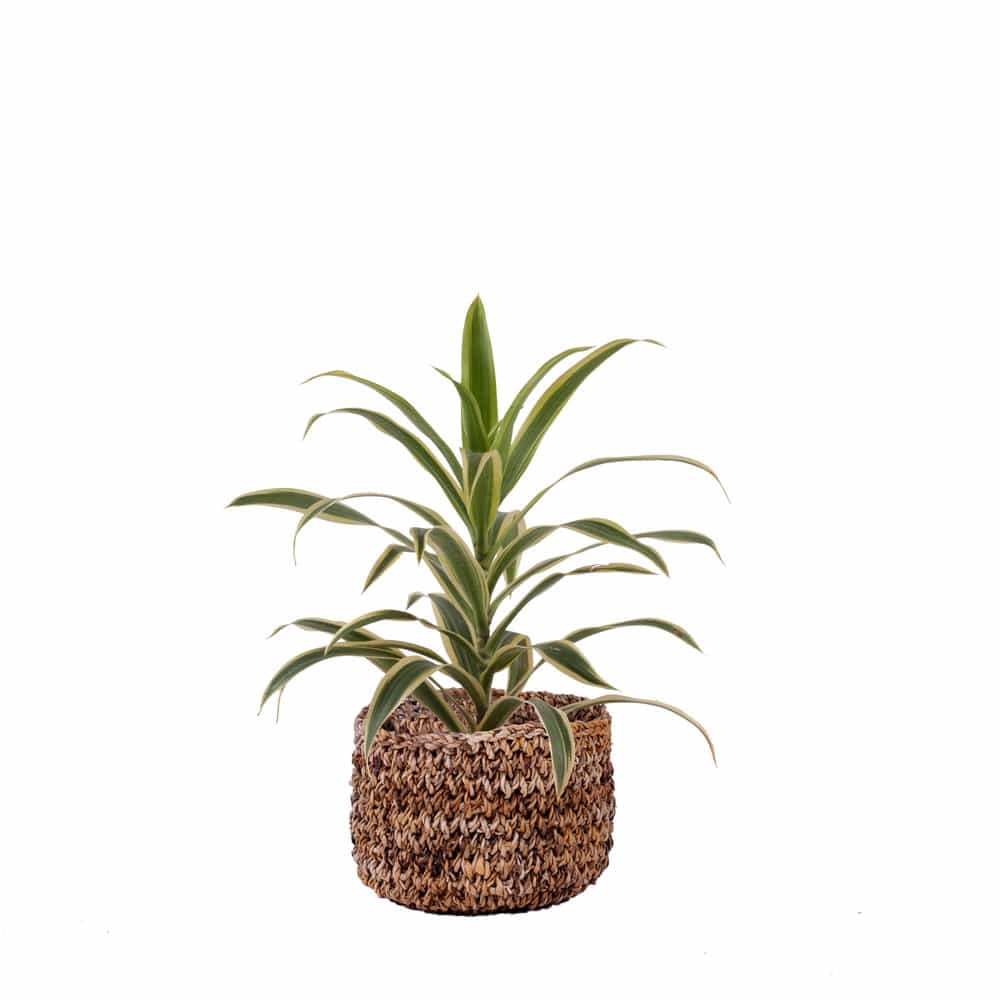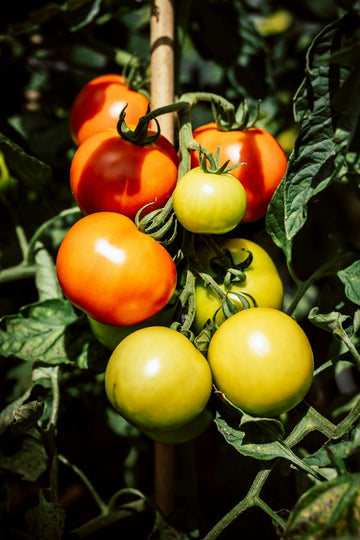Spider plants, also known as Chlorophytum Comosum, are a popular choice among plant enthusiasts because they are low-maintenance and can survive in a range of lighting conditions. These plants are known for their long, thin leaves that hang down like spider legs, hence their name.
There are a few different varieties of spider plants that are popular in India. The "Variegatum" spider plant has leaves with white stripes that add a unique visual interest to the plant. The "Bonnie" spider plant has a more compact growth habit and produces small plantlets on long stems, which can be propagated to make new plants. And the "Ocean" spider plant has green leaves delicately outlined by cream-white borders.
People like to grow spider plants in hanging containers because of the cascading nature of their leaves. If you put them on a shelf or table, be careful not to squash the leaves or let the baby plants get too heavy and make the planter fall over. In warm places, spider plants can grow well outside in planter or even as ground cover plants.
Care Tips on Spider Plant
Water | Light | Temperature | Soil & Fertilizer | Pest | Propagation | Planter Recommendations
Watering

Spider plants are generally low maintenance and don't require much watering, but it's important to provide them with the right amount. Over-watering can lead to root rot, while under-watering can cause the leaves to wilt and turn brown. Always touch the soil before watering to check if the soil is dry to the touch. The soil dries up faster during summer and hence the plant usually requires more water during summer than during winter. When watering, it's important to use enough water to thoroughly saturate the soil but be careful not to let the water pool in the bottom of the planter. Proper drainage is crucial, as spider plants are sensitive to water-logged soil. Make sure your planter has drainage holes and consider adding a layer of gravel at the bottom of the planter before adding soil. Using room-temperature water is ideal for spider plants as cold water can shock the roots.
(back to top)
Lighting
Spider plants prefer bright, indirect light. This means that they should ideally be placed outdoors on your balcony or garden, or in a room that receives ample natural light. If natural light is not available, fluorescent lights are a good alternative. On the other hand, direct sunlight should be avoided, as it can burn the leaves and cause damage. They do not tolerate low light conditions, so make sure not to place them indoors. If you notice that your spider plant's leaves are turning yellow or brown, it may be getting too much direct light or not enough light. To remedy this, adjust the placement of your plant to get the right amount of light it needs.
(back to top)
Temperature and Humidity

Spider plants are mostly adaptable to a range of temperatures, but they do have an ideal temperature range in which they thrive which is between 15-24°C. They can tolerate fairly low temperatures, but they should be kept away from cold drafts. They prefer moderate humidity levels between 40-60%. If the humidity level is too low, the tips of the leaves may turn brown and crispy. To maintain optimal conditions, it's important to keep your spider plant away from air vents, as direct air can cause fluctuations in temperature and humidity levels. You can also place a tray of water near the plant to increase humidity or mist the leaves regularly.
(back to top)
Soil and Fertilizer
Spider plants are not particularly picky when it comes to soil, but there are some types that can help them grow. They need to be planted in well-draining soil that's rich in organic matter and provides good drainage while also retaining moisture. When it comes to fertilizing, spider plants don't require a lot of nutrients. A balanced, water-soluble fertilizer can be applied once a month during the early summers. The fertilizer should be diluted to half-strength to avoid burning the roots. Spider plants benefit from a fertilizer that's high in nitrogen, as this promotes leaf growth. When repotting spider plants, it's important to use a planter that's only slightly larger than the previous planter. Spider plants prefer to be slightly root-bound, so it's best to avoid over-potting. When repotting, make sure to gently loosen the roots and remove any dead or damaged roots. Repotting should be done when the plant is actively growing.
(back to top)
Pest and Disease Control
Spider plants are usually hardy and resistant to pests and diseases, but they can still fall prey to some common issues. The most common pests that can affect spider plants are spider mites, mealybugs, and scale insects. It's important to keep the plant clean and free from dust and debris. Regularly wipe the leaves with a damp cloth to keep them free from pests. If an infestation does occur, the best treatment is to isolate the plant and use a neem oil spray. For spider mites, which are tiny pests that cause stippling on the leaves, a solution of neem oil and water can be effective. Mealybugs, which appear as white, cottony masses on the leaves, can be treated with a mixture of water and dish soap. In terms of diseases, spider plants can be susceptible to root rot if overwatered or if the soil is poorly drained. To prevent this, make sure the soil is well-draining and avoid overwatering. If root rot does occur, it may be necessary to trim away any affected roots and repot the plant in fresh soil.
(back to top)
How to Propagate Spider Plants

Spider plants are easy to propagate, and there are several different methods you can use. The most common method is by division, which involves separating the plant's runners or "spiderettes" (spider plant babies) from the parent plant. This can be done at any time of the year, but it's best to wait until the spiderette has grown several inches long and has developed its own set of roots. To propagate by division, gently remove the spiderette from the parent plant and carefully separate the roots. Plant the spiderette in a planter filled with well-draining soil, water it thoroughly, and place it in a bright, indirect light. Another method of propagation is by rooting the spider plant's stem cuttings in water. This can be done by taking a stem cutting that's several inches long, removing the lower leaves, and placing the stem in a container of water. Change the water every few days and wait for roots to develop, which can take several weeks. Once the roots are well-established, transplant the cutting into a planter filled with well-draining soil.
Spider plants are some of the easiest houseplants to care for, making them an excellent choice for new plant parents or busy individuals. With the right amount of light, water, and attention, your spider plant can thrive and bring a touch of greenery to your home or office. Remember to avoid overwatering and fertilizing, and don't be afraid to prune your plant regularly to encourage growth and prevent it from becoming too leggy. If you have any questions about caring for your spider plant, don’t hesitate to reach out to us!
(back to top)
Recommendation for your Spider Plant
Discover more planters for your Spider Plant










 At Palasa, we believe in the seamless fusion of nature, design and humanity.
At Palasa, we believe in the seamless fusion of nature, design and humanity.